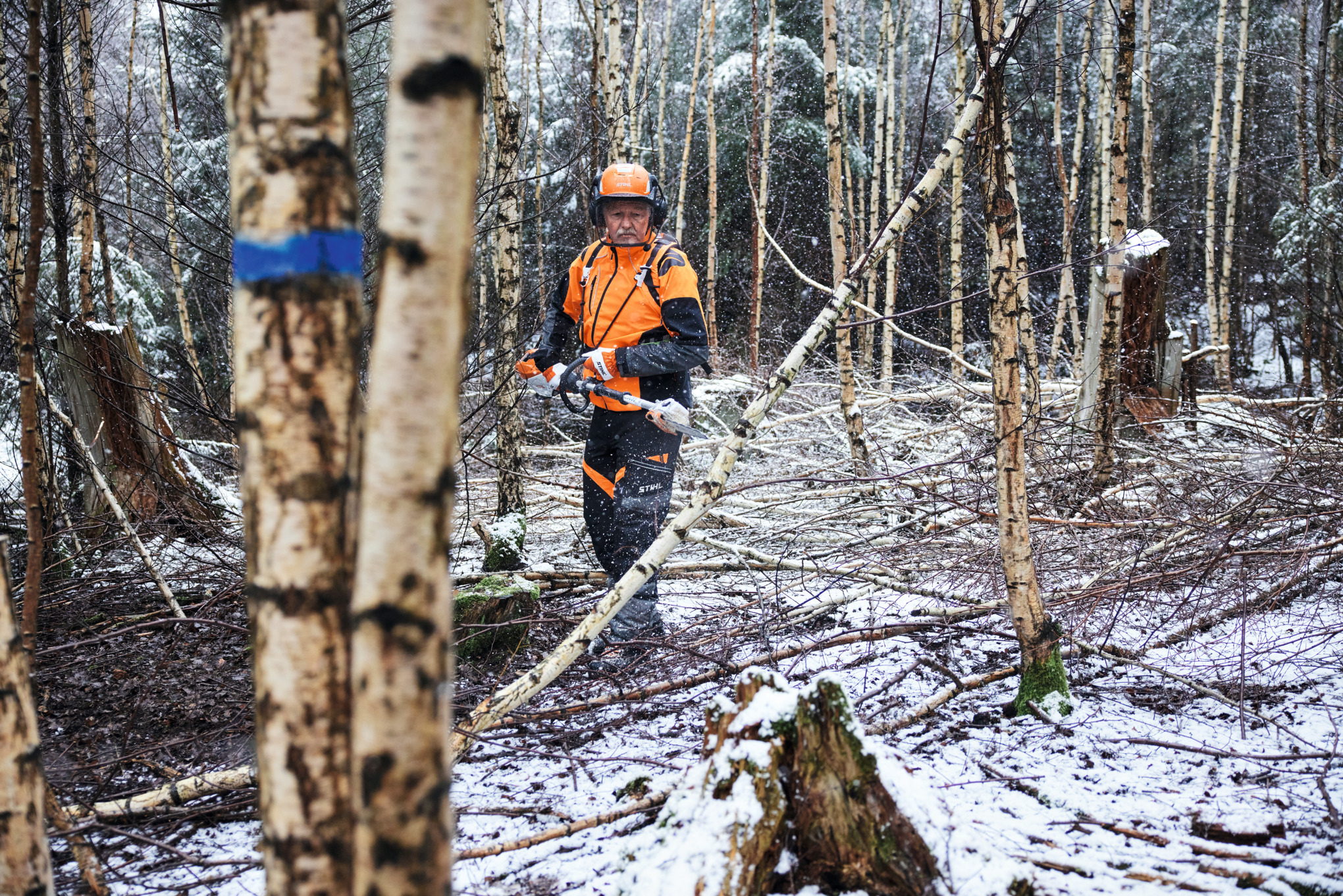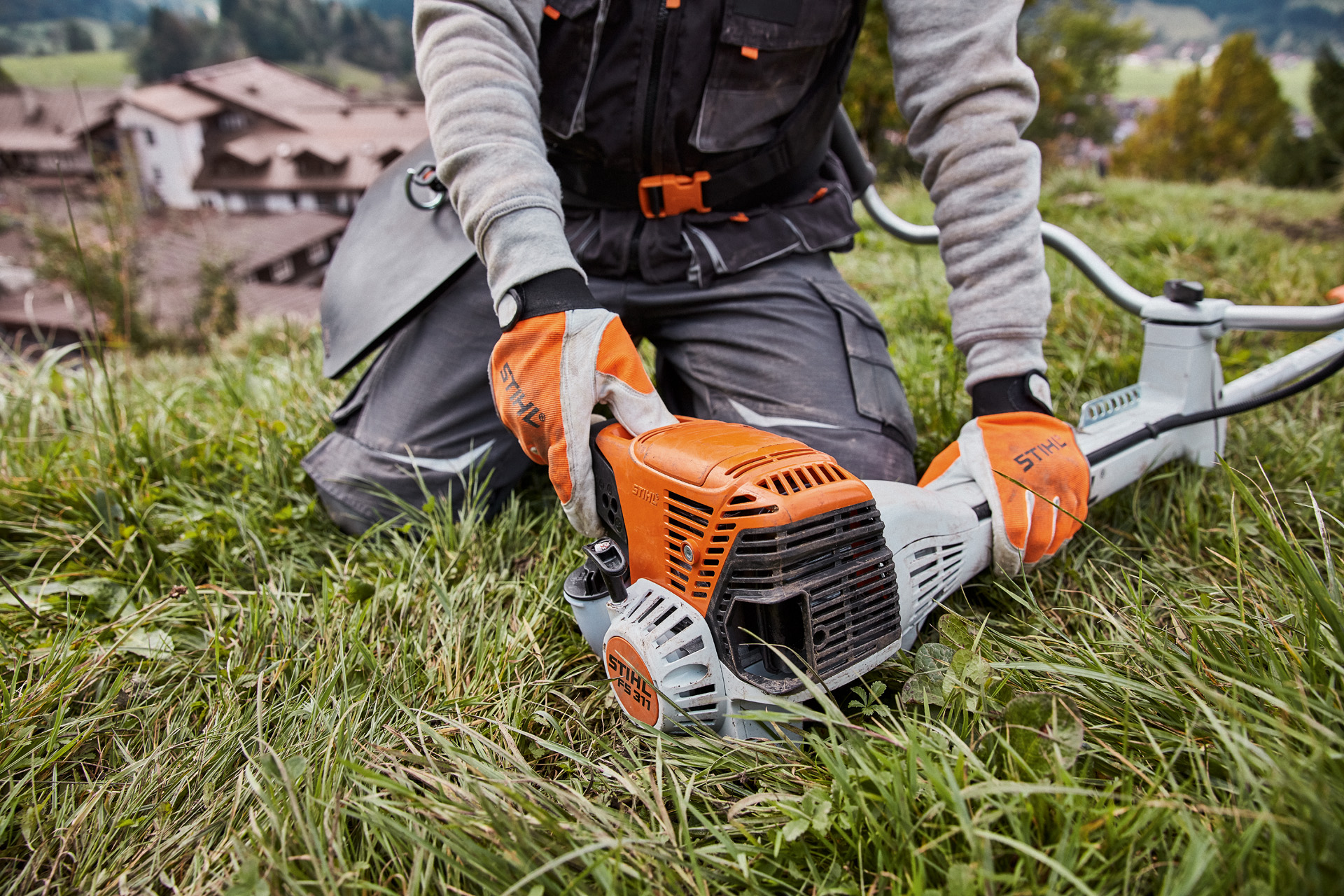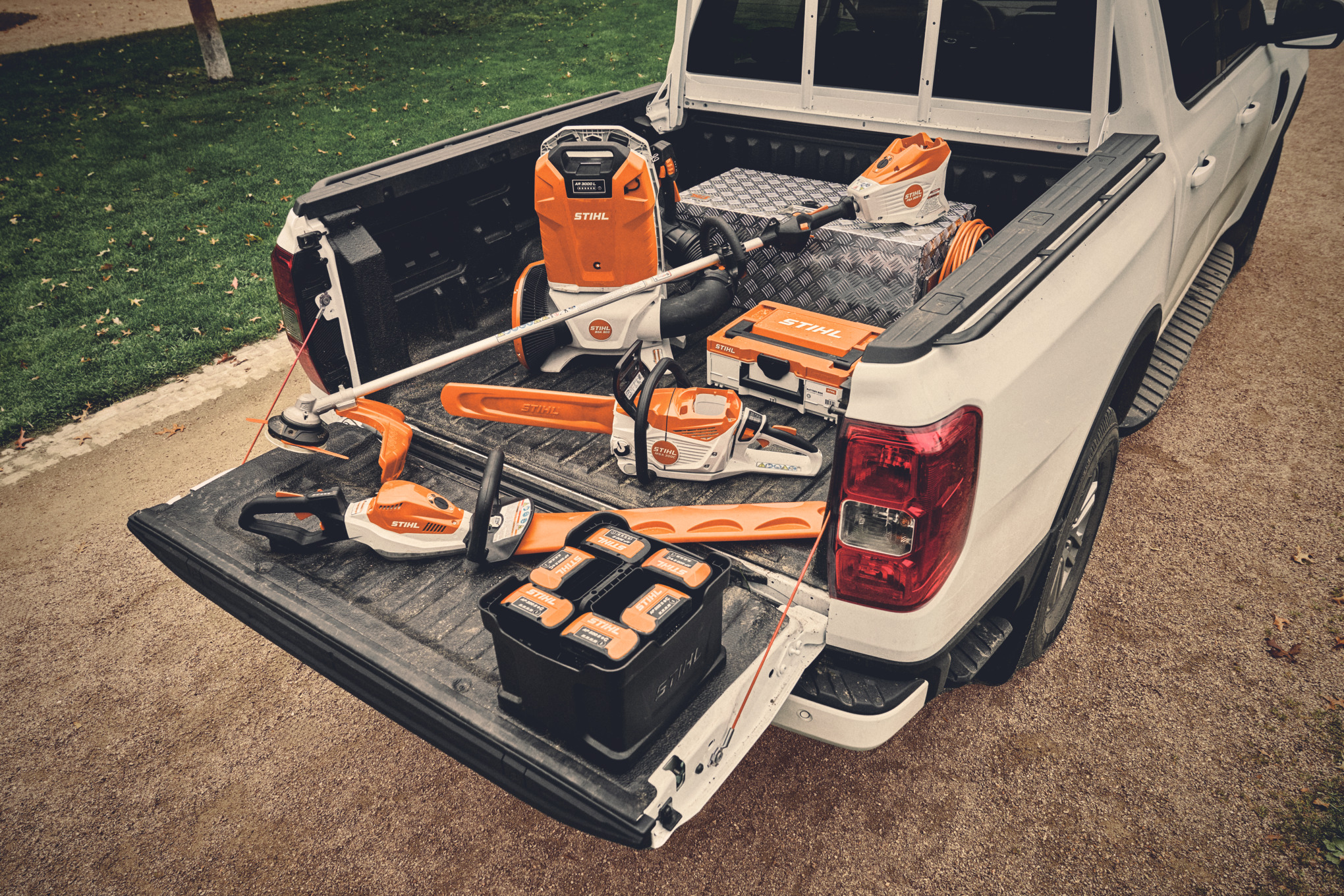Young Stand Management: Procedures and Insights
Young stand management safeguards the future of woodlands. Continue reading to find out what to do and the right tools required.
04.09.2024

Overview: Young stand management
- Young stand management includes forestry activities up to when timber harvesting begins
- Tools used for the associated tasks include brushcutters, thinning tools and chainsaws
- The STIHL HTA 150 battery-powered pole pruner is ergonomic and convenient to operate for maintaining young stands
- Major focus of work at the Forestry Education Centre in Arnsberg
- Every 3-5 years an evaluation takes place in which trees are labelled
Young stand management is really important because it can improve and facilitate future clearing work. It ensures the quality and stability of forest stands
Young stands should be tended when the trees have reached a height of up to 12 metres.
The procedures should be repeated every 3-5 years until the trees have attained a diameter of 20 cm. The interventions are carried out when necessary – the autumn and winter months are the most suitable seasons for young stand maintenance.
An audit by the State Forest Administration of Baden-Württemberg in 2008 concluded an average cost of $1500 per hectare for young stand management.
Young stand thinning refers to interventions in young stands as opposed to thinning of mature trees (= interventions in established stands).
Fundamentals of young stand management
Young stand management includes all activities preceding the harvesting of timber which are taken to ensure the quality, stability and structure of planting areas and for natural rejuvenation.
A central principle in young stand and thicket management is: “A thicket must remain a thicket”. A forest thicket is a stand made up of trees from 2 metres tall and with trunk diameters of less than 7 cm.
But not every thicket and other stand will survive unharmed: in recent years, many trees have been torn down by storms – for example 15.7 million cubic metres of wood fell victim to hurricane Kyrill in 2007. Heat and drought also put tree stands at risk. Extreme weather events like these have caused massive losses for forestry. In better news, reforestation means stands are recovering from past calamities.

Young stand management necessitates the right equipment.
Young stand management is a way of controlling the species composition of trees in thickets and makes it possible to adapt it to suit climatic conditions. An enduring forest for the future is a mixed woodland which takes into account changes to climate.
In coniferous thickets, for example stands of young spruce, no maintenance interventions are usually made. The goal is to achieve a species-rich, structured and stable population of trees. In deciduous stands, the target is a closed, mixed thicket with suitable candidates for the next phase of selective harvesting.
Ergonomic and protected work in the forest
The right tool for young stand management
For professional young stand management, it is essential to have the right tools. Suitable examples here include powerful brushcutters with circular saw blades, thinning tools and chainsaws.
Advantages and disadvantages of individual tools
Here are some of the features as well as the main advantages and disadvantages of individual tools:
| Clearing saws | Thinning tools | Chainsaw | |
| Tree diameter | 0-10 cm | 3-20 cm | 3->20 cm |
| Area of use | Early stages of young stand management: regulation, young stand regulation of mixed growth, reduction of number of trunks | In very dense-growing stands for regulation of young stands, regulation of mixed growth and thinning | In very dense-growing stands for regulation of young stands, regulation of mixed growth and thinning |
| Advantages | Ergonomics, efficiency | Mobility, flexible use at every stage, high working safety, quick to learn | Mobility, flexible use at every stage, weight |
| Disadvantages | Limited scope to manoeuvre, difficult to use in later stages of woodland management | Chainsaw affords better mobility; hard on the joints | Ergonomic disadvantages; reduced working safety |
Battery advantages
STIHL power tools offer a number of general battery advantages when used in young stand management. They generate little noise on hiking trails and in scenic destinations and are suitable for emissions-free work. As a result, they have a low carbon footprint and employee health benefits.
In addition, modern battery-powered tools are so high performing that they can easily keep up with petrol-driven power tools.
Using it in combination with the STIHL carrying system enables long periods of trouble-free working by means of optimal weight distribution. This makes young stand management with the pole pruner easier and more effective.
Video: Young stand management in practice
Young stand management is a major focus of work at the Forestry Education Centre (FBZ) in Arnsberg. The central tasks considered there include:
- restocking areas after storm events
- supported cultivation of lower-growth tree species
- removal of overcrowding trees
You can find out more about young stand management in Arnsberg in our video.
By watching the video you agree to YouTube processing your data and that you have read the Privacy Policy.
Products from the video
Stand analysis
Unlike tree monitoring, which is carried out on traffic routes every two years, less frequent stand analyses are required in young stand management. An assessment is recommended every 3-5 years, in the autumn and winter months. This involves estimating the intervention requirements at 100-150 points per hectare in accessible areas.
To create a picture of the local conditions, an “option” is marked with a green band every 8-10 metres. The selected option indicates the maintenance objective or the characteristics of future crop candidates on an assessment area of around one acre.

The site map and the Bavarian location information system (BaSIS), which describes the cultivation risks for the most important tree species, provide information about the site suitability of individual tree species.
When to take action?
Careful intervention in favour of the option must be taken only if the selected option is under pressure.
Within the surrounding acre or so, it is necessary to remove or cut back a fast-growing coarse form where this growth will crowd out some of your selected options in the foreseeable future, or if it will require a lot of effort to remove later on. This method preserves native and pioneer tree species, which is important for nature conservation.
A related issue here is accompanying vegetation. This offers effective protection against wind, dehydration and snow. However, overgrown accompanying vegetation from fast-growing plants should be removed, as this can often deprive young trees of water, light and nutrients.

Elder counts as critical accompanying vegetation
Critical plants include:
- Bracken (Pteridium aquilinum)
- Blackberry (Rubus sect. Rubus)
- Himalayan balsam (Impatiens glandulifera)
- Elder (Sambucus)
All work on vegetation should always be carried out with due regard to working safety and equipment of the appropriate cut protection class.
The future of young stand management
In view of the challenges of climate change, professional young stand management will continue to play an important role in the future. The risk of total failures from dying trees is increasing, but consistent, continuous management of young stands reduces the risk of failure.
Early vitalised individual trees are more robust against extreme weather conditions. In addition, forest cultivation can increase CO2 binding. The “Fit for 55” package under the EU Green Deal envisages the planting of 3 billion trees by 2030.
This will lead to an enormous need for young tree care and young forest management to preserve the biodiversity of woodlands. Advanced, high-performance STIHL battery-powered tools will also be in demand to handle these tasks. That’s why passing on and continuously developing technical knowledge is perhaps more important than ever.



